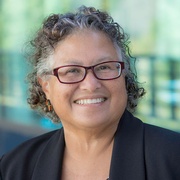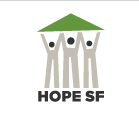Making Health Equity Work: An Interview with Cynthia A. Gómez
Cynthia A. Gómez, PhD | March 15, 2018
Professor Emerita in Health Education, Founding Director Health Equity Institute, San Francisco State University
Cynthia A. Gómez is a pioneer in the field of health equity. For decades, she has worked to promote a greater understanding of how to translate its principles into effective research and practice. The health equity model has been critical to ETR’s own mission and vision, and will be a great help to anyone working to improve the health of communities and individuals. We are so honored that Dr. Gómez took time to talk with us about her perspectives.
- Do you have a favorite story or explanation you like to use to help people understand the concept of health equity?
The way I like to describe the concept of health equity is to say that it is the solution to the problem of health inequities. Health inequities are differences in health outcomes that are avoidable.
I think of health equity as a visionary goal where all people have equal opportunity, access, and resources to achieve the best health possible. To reach this goal, we must address the health inequities which are driven by factors that are avoidable, unfair and unjust—exactly those that are often concentrated within our most vulnerable or disenfranchised populations.
2. Why is health equity important?
 Health equity is important to our society because we all benefit from the health and well-being of others. If we invest in people’s health and well-being, we will have a more productive workforce, a happier society, and a lower economic burden related to health care costs. But even more importantly, I believe all people have the right to equal opportunity to achieve the best health and well-being possible.
Health equity is important to our society because we all benefit from the health and well-being of others. If we invest in people’s health and well-being, we will have a more productive workforce, a happier society, and a lower economic burden related to health care costs. But even more importantly, I believe all people have the right to equal opportunity to achieve the best health and well-being possible.
3. What inspired you to start the Health Equity Institute?
My inspiration in creating the Health Equity Institute (HEI) back in 2006 came from my previous 20 years of working on ending the HIV pandemic. Through my research on HIV, it became very clear to me that people’s vulnerability to HIV and other health problems went beyond their physiology or individual behaviors. In fact, HIV gave us a natural study of how health inequities can emerge over time.
An epidemic that started predominately among higher income white gay men is now an epidemic concentrated among poor black women. Even though gay men continue to be greatly impacted by HIV, the overrepresentation of the poor, the young and people of color suggests that there are powerful social and environmental determinants of these outcomes.
The opportunity to broaden our understanding of the causes of health inequities and develop solutions brought much excitement and innovation to our work at the Health Equity Institute.
3. As you know, ETR models its work on a Health Equity Framework. How does this type of framework help us think about and understand health education, research, policy and practice in more useful ways?
The ETR Health Equity Framework helps us understand different areas of people’s lives that can have a role in determining health and educational outcomes. In the past we have typically relied on biological pathways and individual behaviors to explain the main causes for people getting certain diseases such as diabetes or cardiovascular disease. This has led to blaming people—“You did some bad behavior such as overeating or smoking, so it’s your fault if you get sick.”
This blaming attitude ignores factors that may have preceded or caused those unhealthy behaviors. Over time, we have recognized the critical role of larger societal institutions such as government, schools, hospitals and corporations, because they have the power and influence to create inequalities.

Similarly, we recognize the importance of social connection and how having strong support systems can mitigate some of the oppressive actions we may experience within a society that still demonstrates prejudice and discrimination based on income, race, gender, age, etc.
These insights offer illumination in four important areas of health:
- Health education: They allow us to educate young people and adults to better understand themselves within their social context, rather than blaming them for less than optimal health and educational outcomes.
- Research: They provide researchers many different areas of inquiry, particularly beyond individual level behaviors.
- Health practices: The framework underscores the importance of ensuring we are fair and just to all people, and can help systems of power use their power in more productive and equitable ways.
- Policymakers: Finally, the framework provides policymakers with a multitude of areas where policies could be created to ensure fairness for all people.
4. What are some of the things you think of as successes or wins in the work of the Health Equity Institute?
I’m very proud of the work of HEI and could give you many examples of successes, but I will limit myself to just a couple.
HOPE SF
One has been our work with residents of public housing in the city of San Francisco in a project called HOPE SF. These communities represent the worst health outcomes within a resource rich city. How are these communities different from other areas in SF? It’s the concentration of environmental stressors such as violence, poor housing conditions, lack of access to fresh foods, lack of access to good educational systems, and discrimination from neighboring communities.
HEI has spent many years working hand in hand with residents to determine their priorities, their health status and their own ideas for solutions. This work, joined in partnership with local government and private sector philanthropy, has allowed these communities to develop improvements to their own neighborhoods and seek better access to health, education, and job opportunities for their residents.
Stressors in Same-Sex Relationships
Another important area of work done by our researchers at HEI is increasing our understanding of stressors experienced by same-sex couples. It’s important to look beyond the individual level stressor and better understand how stress is shared. How are people affected by the relationships they’re in, particularly when they’re in a relationship that is stigmatized?
Our research found that many same-sex couples feel that they are in a second-class relationship. They sense that society doesn’t value their relationship equally, even after taking into account the beneficial impact of gaining legal recognition through marriage. These feelings are associated with mental health issues such as greater depression and problematic drinking.
The lead investigator, Allen Leblanc, emphasized that this is a stark reminder that legal changes will not quickly or fully address the long-standing mental health disparities faced by sexual minority populations. The unique challenges confronting same-sex couples emanate from the stigma and marginalization they face from society at large, not from anything that is unique about their relationships in and of themselves. Similar work is currently underway among transgender individuals and individuals who are self-identified as gender nonconforming.
Context Matters
Both of these examples highlight the importance of understanding the context of people’s lives in order to work together to create solutions. Many of the solutions truly lie with the perpetrators of stigma and discrimination, so our work really needs to go upstream—creating more fair and just practices in all areas, not just health.
5. What are some of the practical ways people are putting the concept of health equity to work, both organizationally and individually?
We are starting to see many creative and practical ways that people are addressing health inequities. At the institutional level for example, organizations are self-examining their hiring policies. They ask themselves whether they are creating unfair and unjust situations by, for example, requiring a college degree in jobs that could benefit from life experience as much as from book knowledge.
If they are a healthcare delivery system, they might ask themselves, “Are we offering enough evening and weekend hours for people who have to work two or three jobs and cannot take time off to see a doctor? Are our staff trained to be nonjudgmental and welcome anyone who comes through our doors?”
 An individual health education teacher might consider the different social contexts of their students. Rather than simply teaching students how to eat healthy, they might explore ways to access fresh fruits and vegetables in neighborhoods considered “food deserts”—neighborhoods many students might come from.
An individual health education teacher might consider the different social contexts of their students. Rather than simply teaching students how to eat healthy, they might explore ways to access fresh fruits and vegetables in neighborhoods considered “food deserts”—neighborhoods many students might come from.
County health departments are starting to realize that they must partner with other county departments such as housing, transportation, and parks and recreation, so they can collectively create optimal living environments for health and well-being.
The community health outreach worker, on the other hand, might help a family stay engaged with their healthcare provider but will also need to help them find better transportation and childcare options before they can be fully engaged.
One of the exciting things about this framework is that you can put these essential principles into action as an individual, team or institution. In each situation, it will offer positive, creative options.
Cynthia A. Gómez, PhD, is the founding director of the Health Equity Institute at San Francisco State University. She previously served as co-director of the Center for AIDS Prevention Studies at the University of California, San Francisco. She has been a leading scientist in HIV prevention research since 1991. She is also a member of ETR’s Board of Directors.





